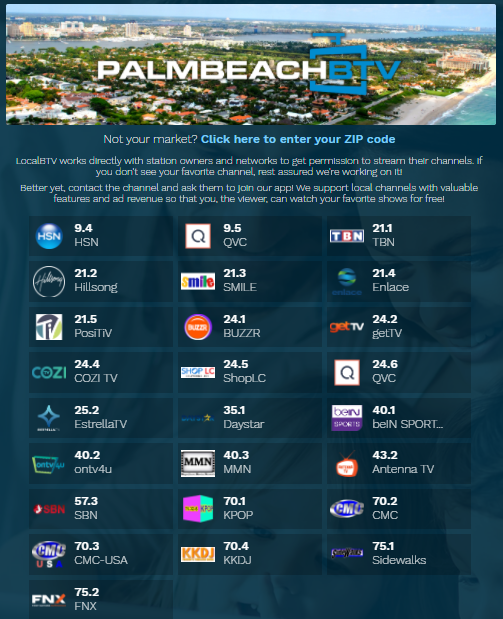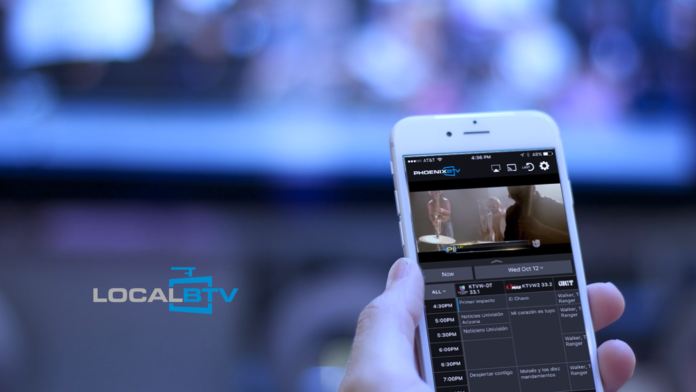RBR+TVBR EXCLUSIVE
There was Aereo. More recently and perhaps more infamously, there was Locast.
Each of the now-defunct services provided broadcast TV channels via an IPTV service, and each were criticized by the nation’s “Big Four” networks and the NAB for skirting retransmission consent accords.
Now comes a new “virtual Over the Air” streaming service offering a “local broadcast bundle” based on one’s location. And, the company offering the service, says, it is the first and only legal platform seen yet in the United States.
Introducing LocalBTV, from Didja, Inc.
Not familiar with the company? Didja is based in the heart of Silicon Valley and specializes in technology products designed to help users better engage with live, linear television. Specifically, Didja’s hybrid-cloud platform and consumer digital apps (LocalBTV and
Clippit) “are designed to help broadcasters, networks and content owners expand their revenues by both delighting viewers with increased digital functionality, and fostering direct relationships with new and existing consumers of broadcast content,” the company asserts.
While the technical means of delivering live television through IPTV is unquestioned, getting the rights to do so from the copyright holders and agreeing to fair compensation has been the issue.
For Didja, that’s a work in progress, as LocalBTV is now operational in 21 U.S. TV DMAs. Some 15 DMAs were launched in the last 12 months. These markets include Atlanta, Bakersfield, Biloxi-Gulfport, Chicago, Cincinnati, Fresno, Houston, Indianapolis, Las Vegas, Louisville, Monterey-Salinas, Nashville, West Palm Beach-Treasure Coast, Reno and Toledo.
They join LocalBTV’s original “beta market” lineup — Phoenix, San Francisco-Oakland-San Jose, Los Angeles, San Diego, Philadelphia, and New York — launched in 2019.
An additional 20 DMAs, extending LocalBTV’s availability to 50% of US households, are slated for launch in the coming months. There are plans for LocalBTV to be in upward of 100 markets by the end of 2022.
That’s encouraging, especially as Didja expressly states that it “seeks and secures permission from local broadcast signal owners for inclusion in its unique ‘antenna TV without an antenna’ service.” That’s something Aereo and Locast, which Biden Administration FCC Commissioner nominee Gigi Sohn has close ties to, did not.”
Didja’s goal is to expand access to local broadcast over-the-air (OTA) television to include a variety of increasingly consumer-preferred digital devices, including smartphones, tablets, laptops and connected TVs. This would enable live and simultaneous viewing within a station’s authenticated geo-fenced DMA, regardless of touchpoint.
In an emergency, this could be a life-saving option.
For broadcasters, the Local BTV platform could add, in Didja’s view, “significant new and measurable viewership.” There’s also an added revenue play Didja’s eager to pitch, thanks to targeted digital ad insertion/replacement, in-app channel promotion and “seamless linkage to premium up-sell offerings and outside commerce/donation platforms.”

LocalBTV is led by CEO Jim Long. He created Didja in 2014, and has been an angel investor in consumer services and enterprise services businesses across Silicon Valley for nearly 20 years.
Long is also the founder of Starlight Networks, which claimed to be the first video streaming company.
Long said, “We are pleased to be a meaningful factor in the resurgence of local broadcast TV viewing with our versatile virtual-over-the-air platform. We see 2022 as a high-growth year for more markets, more channels, more viewers, as well as new revenue and viewership for our local broadcaster partners.”
The LocalBTV app is available from the iTunes and Google Play mobile app stores; AppleTV, Amazon FireTV, Roku, Android TV, LG, and soon Samsung and Vizio connected TV platforms; as well as via standard Internet web browsers.
But, what channels can one receive in their respective DMA? “If you don’t see your favorite channel, rest assured we’re working on it!,” LocalBTV says.
In RBR+TVBR‘s home market of West Palm Beach, LocalBTV has a lot of work to do.

The LocalBTV platform currently powers 704 local broadcast TV channels, as well as 88 “hyper-local” community video channels across its current 21 markets/DMAs. But, there’s one important caveat: LocalBTV does not currently include major national network programming. “We expect all of the 70-100+ local broadcast channels in each market to be available in the future,” LocalBTV says.
While that’s expected, it makes LocalBTV a tough sell today. In New York, WNET-13 is lone major draw aside from TBN and several digital multicast networks. In Phoenix, it is a similar story, with “AZPBS” and a host of diginets and independent broadcasters the lone options.
That’s good news for Lynn Londen, owner of KAZT, billed as “Arizona’s Own – AZTV Channel 7.” Londen says, “As a local independent station, we’re constantly trying to reach as many viewers in as many ways as possible. LocalBTV helps us with that … In some cases, PhoenixBTV reaches viewers in areas with poor reception, giving them a way to watch us for the first time.”
Whether audiences care right now is the big question. Without the Big Four network affiliates, LocalBTV could be the next casualty in the “vOTA” universe. Or, it could be on the verge of finally getting the recipe for longevity and ultimate success just right.





